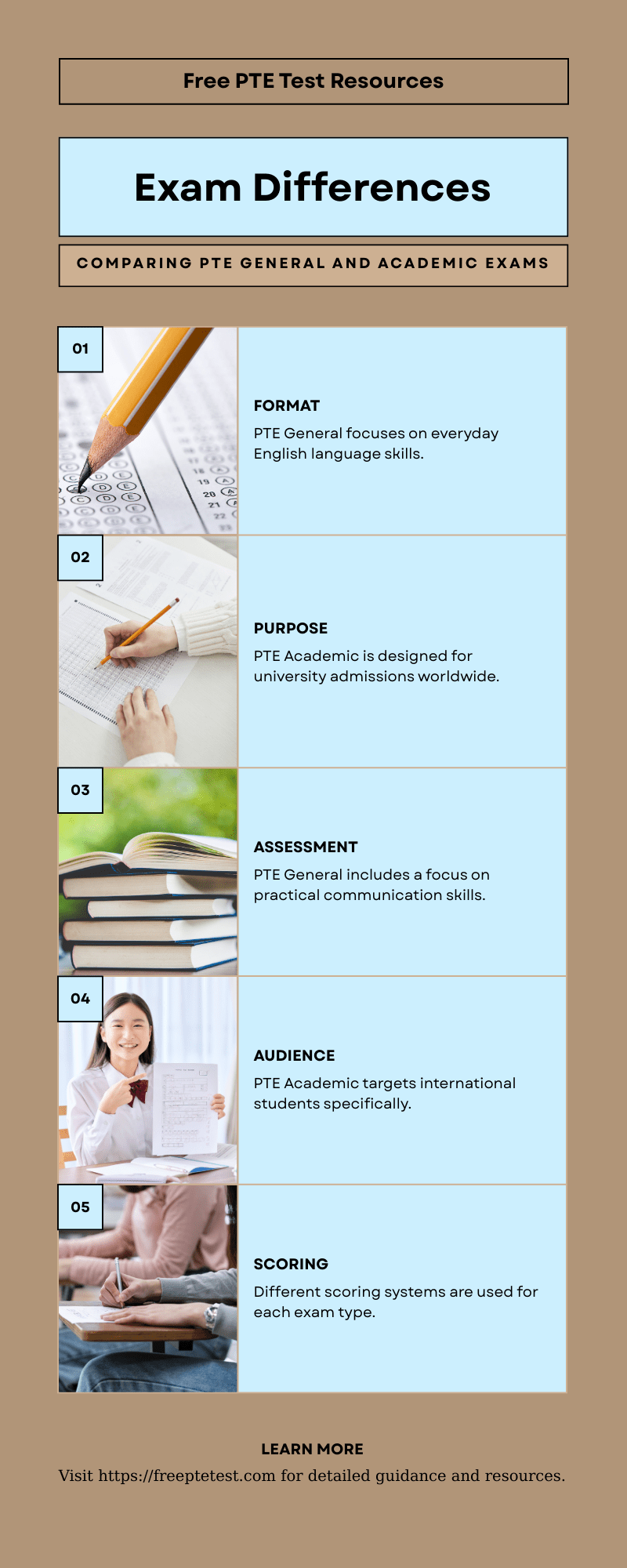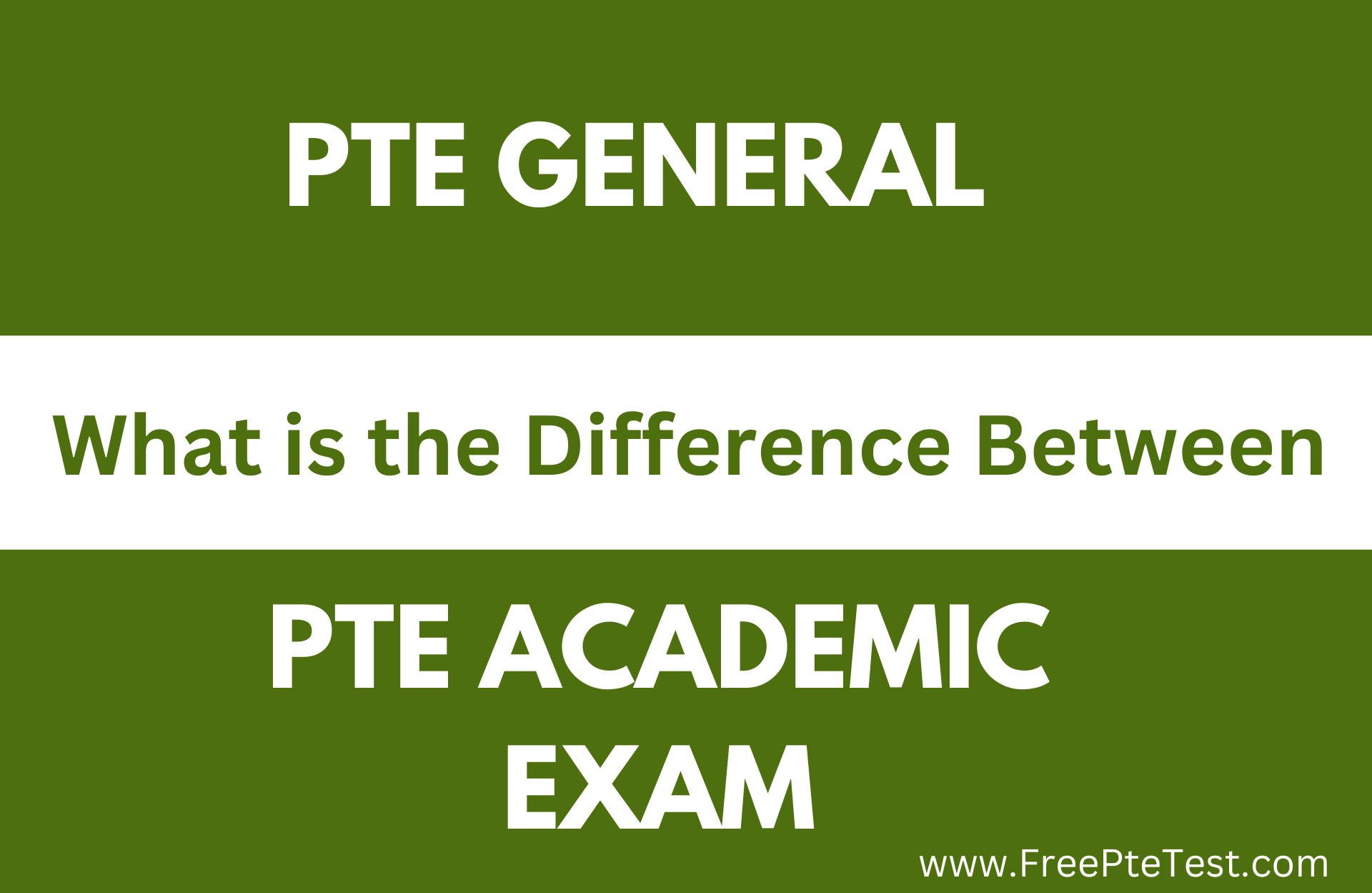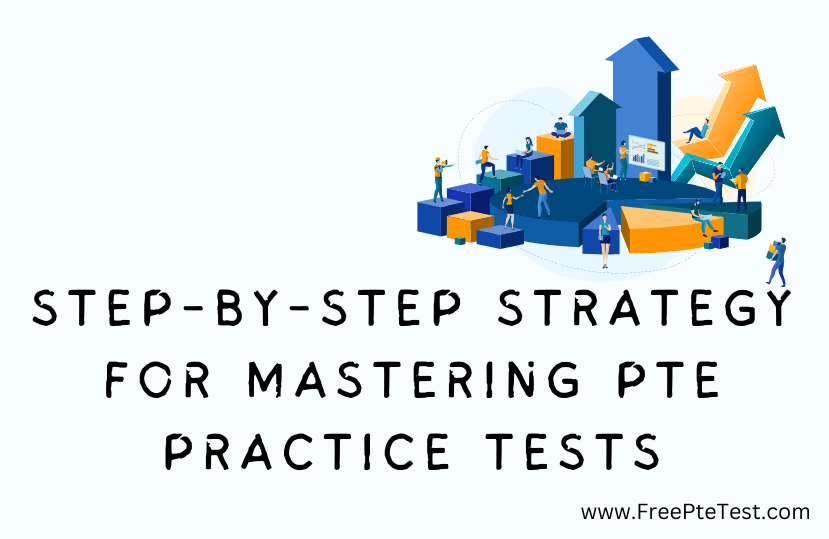The Pearson Test of English (PTE) is a globally recognized suite of English language proficiency exams designed to assess the abilities of non-native English speakers. Administered by Pearson, these tests cater to diverse needs, from academic admissions to immigration and professional certifications.
Among the PTE offerings, two prominent variants stand out: PTE General and PTE Academic. While both evaluate English proficiency, they serve distinct purposes, target different audiences, and feature unique formats and scoring systems.
As of August 2025, updates to PTE Academic have introduced new tasks and refined scoring mechanisms, further distinguishing it from PTE General.
This article explores the key differences between PTE General and PTE Academic, covering their purposes, formats, scoring, recognition, preparation strategies using freeptetest resources, and the impact of recent updates.
Whether you’re aiming for university admission, a visa, or professional growth, understanding these differences will guide you in choosing the right test.
Purpose and Target Audience
PTE General
PTE General is designed to assess the general English language proficiency of non-native speakers in everyday, real-life contexts. It evaluates how well candidates can use English for practical communication, such as in social interactions, workplace scenarios, or personal settings.
The test is structured to measure overall language skills across speaking, writing, reading, and listening, making it suitable for individuals seeking to demonstrate their English abilities for non-academic purposes.
The primary audience for PTE General includes:
- Professionals seeking employment or promotions in English-speaking environments.
- Individuals applying for immigration or residency in countries where general English proficiency is required.
- Learners aiming to certify their language skills for personal development or non-academic certifications.
PTE General is offered at six levels, aligned with the Common European Framework of Reference for Languages (CEFR), ranging from A1 (Beginner) to C2 (Proficient).
This flexibility allows test-takers to choose a level that matches their current proficiency, making it accessible for a wide range of candidates, from beginners to advanced speakers.
PTE Academic
In contrast, PTE Academic is tailored for academic purposes, focusing on the language skills needed in higher education and professional academic settings.
It is widely accepted by universities, colleges, and other educational institutions as proof of English proficiency for admission into academic programs.
Additionally, it is recognized by governments for visa and immigration applications, particularly in countries like Australia, Canada, New Zealand, and the UK (via PTE Academic UKVI).
The target audience for PTE Academic includes:
- Students applying to universities or colleges in English-speaking countries.
- Professionals seeking academic certifications or licenses that require proof of academic English proficiency.
- Visa applicants needing a Secure English Language Test (SELT) for immigration purposes, such as the UK’s PTE Academic UKVI.
PTE Academic focuses on skills like academic writing, listening to lectures, reading scholarly texts, and engaging in academic discussions. Its emphasis on academic English makes it distinct from the broader, everyday focus of PTE General.
Test Format and Structure
PTE General
PTE General is structured into two main components: a written paper and a spoken test, which together assess all four language skills.
The test is available at six CEFR levels, allowing candidates to select a level appropriate to their abilities. Each level has a different duration and complexity, ranging from approximately 1.5 hours for A1 to 3 hours for C2.
- Written Paper: This section evaluates reading, writing, and listening skills through tasks such as:
- Reading comprehension (e.g., answering questions based on texts like articles or advertisements).
- Writing tasks (e.g., composing letters, essays, or short responses).
- Listening tasks (e.g., answering questions based on audio clips of conversations or announcements).
- Spoken Test: Conducted separately, often with a human examiner, this section assesses speaking and listening skills through:
- Oral interviews or discussions.
- Describing scenarios or responding to prompts.
- Listening to and summarizing spoken content.
The tasks in PTE General are designed to reflect everyday communication, such as writing emails, participating in conversations, or understanding public announcements.
The test uses authentic materials, like newspaper articles or casual dialogues, to mimic real-world language use. As of 2025, PTE General’s format remains unchanged, maintaining its focus on practical, general English.
PTE Academic
PTE Academic is a fully computer-based test completed in a single session lasting approximately 2 to 2.15 hours, with an optional 10-minute break.
It is divided into three main sections: Speaking and Writing (combined), Reading, and Listening, encompassing 22 task types (up from 20 due to 2025 updates).
The test is conducted at secure Pearson VUE test centers, using a computer and headset, and leverages AI for scoring, supplemented by human oversight for select tasks.
Speaking and Writing (76–84 Minutes)
This section, extended in 2025, includes 35–45 tasks, with two new additions:
- Personal Introduction (unscored): Introduce yourself in 30 seconds.
- Read Aloud (6–7 tasks): Read a short text aloud, testing pronunciation and fluency.
- Repeat Sentence (10–12 tasks): Repeat a heard sentence accurately.
- Describe Image (5–6 tasks): Describe a visual like a graph or chart.
- Re-tell Lecture (2–3 tasks): Summarize a lecture in 40 seconds.
- Answer Short Question (5–6 tasks): Provide a brief response to a question.
- Summarize Written Text (1–2 tasks): Condense a passage into one sentence.
- Write Essay (1–2 tasks): Compose a 200–300 word essay.
- Summarize Group Discussion (2–3 tasks, new in 2025): Summarize a multi-speaker discussion verbally.
- Respond to a Situation (2–3 tasks, new in 2025): Respond to a real-life scenario, such as giving directions.
Reading (29–30 Minutes)
This section includes 13–18 tasks:
- Fill in the Blanks (Reading and Writing, 5–6 tasks): Drag words into text gaps.
- Multiple-Choice, Multiple Answers (1–2 tasks): Select all correct options.
- Re-order Paragraphs (2–3 tasks): Arrange jumbled paragraphs logically.
- Fill in the Blanks (Reading, 4–5 tasks): Choose words from a dropdown.
- Multiple-Choice, Single Answer (1–2 tasks): Select one correct option.
Listening (30–43 Minutes)
This section features 12–20 tasks:
- Summarize Spoken Text (1–2 tasks): Write a summary of an audio.
- Multiple-Choice, Multiple Answers (1–2 tasks): Select correct options.
- Fill in the Blanks (2–3 tasks): Transcribe missing words.
- Highlight Correct Summary (1–2 tasks): Choose the best summary.
- Multiple-Choice, Single Answer (1–2 tasks): Select one option.
- Select Missing Word (1–2 tasks): Predict the final word(s).
- Highlight Incorrect Words (2–3 tasks): Identify transcript errors.
- Write from Dictation (3–4 tasks): Type a heard sentence.
The 2025 updates increased the task count to 65–75, with a focus on spontaneous speaking tasks, and refined scoring for tasks like essays to include human review for originality. PTE Academic uses academic content, such as lectures and scholarly articles, to mirror university-level communication.

Scoring and Results PTE General
PTE General scores are aligned with CEFR levels (A1 to C2), with each level corresponding to a specific proficiency band. Test-takers receive a certificate detailing their overall level and performance in each section (reading, writing, listening, speaking).
The scoring is qualitative, focusing on practical language use, and results are typically available within 6–8 weeks due to the involvement of human examiners for the spoken test. The certificate is a tangible record of proficiency, suitable for employment or immigration purposes.
PTE Academic
PTE Academic employs a granular scoring system, ranging from 10 to 90 for the overall score and individual communicative skills (speaking, writing, reading, listening). It also reports enabling skills scores (grammar, oral fluency, pronunciation, spelling, vocabulary, written discourse).
The 2025 updates introduced more detailed scoring rubrics, such as 0–6 points for essay traits, and expanded human review for tasks like Summarize Group Discussion.
Results are available within 2 business days, accessible via the Pearson online portal, and can be sent directly to institutions. This rapid delivery and precise scoring make PTE Academic ideal for time-sensitive academic or visa applications.
Recognition and Acceptance
PTE General
PTE General is recognized for general purposes, such as employment, promotions, or immigration in certain contexts. Its acceptance varies by organization, as it is less focused on academic settings.
Some employers and immigration authorities value its emphasis on practical English, but its recognition is narrower compared to PTE Academic. Candidates should verify acceptance with specific institutions or authorities.
PTE Academic
PTE Academic enjoys widespread recognition, accepted by over 3,500 universities and colleges globally, including prestigious institutions like Harvard and Yale for select programs.
It is also approved for visa applications in countries like Australia, Canada, New Zealand, and the UK (via PTE Academic UKVI). Professional bodies and licensing organizations also recognize it, making it a versatile choice for academic and immigration purposes.
Preparation Strategies with freeptetest
Preparing for PTE General
PTE General preparation focuses on improving overall language skills for everyday use. Candidates can:
- Practice conversational English through language exchanges or classes.
- Read diverse materials like newspapers or blogs to enhance comprehension.
- Use freeptetest resources tailored to general English, such as sample reading passages or listening exercises.
- Prepare for the spoken test by practicing with a tutor or recording responses to prompts.
Since PTE General spans multiple levels, candidates should assess their current proficiency using freeptetest diagnostics to choose the appropriate level. Regular practice with real-life scenarios, like writing emails or discussing workplace topics, is key.
Preparing for PTE Academic
PTE Academic requires targeted preparation for academic English and familiarity with its computer-based format. Strategies include:
- Use freeptetest mock tests to simulate the test environment and practice all 22 task types.
- Focus on new tasks like Summarize Group Discussion by summarizing podcast debates.
- Practice Respond to a Situation by role-playing scenarios like giving instructions.
- Improve academic writing through freeptetest essay prompts, ensuring clear structure and vocabulary.
- Enhance listening skills with freeptetest audio exercises featuring varied accents.
Allocate 4–8 weeks for preparation, using freeptetest to track progress and target weaknesses. Practice under timed conditions to build speed and confidence.
Impact of 2025 Updates
The August 2025 updates primarily affect PTE Academic, with no significant changes to PTE General. For PTE Academic:
- New Tasks: Summarize Group Discussion and Respond to a Situation enhance real-world applicability.
- Increased Task Count: 65–75 tasks, with more emphasis on speaking.
- Refined Scoring: Human review for five additional tasks ensures fairness and authenticity.
- Extended Speaking and Writing Section: Now 76–84 minutes, accommodating new tasks.
Freeptetest has updated its materials to reflect these changes, offering practice for new tasks and revised scoring rubrics.
PTE General and PTE Academic serve distinct purposes within Pearson’s testing suite. PTE General assesses general English proficiency for everyday use, with a flexible, level-based format suitable for employment or immigration.
PTE Academic, enhanced in 2025, focuses on academic English, offering a computer-based, AI-scored test for university admissions and visas. By understanding their differences—purpose, format, scoring, recognition, and preparation—candidates can choose the right test.
Leveraging freeptetest resources ensures effective preparation, helping test-takers achieve their goals, whether a CEFR level for PTE General or a 65+ score for PTE Academic.


